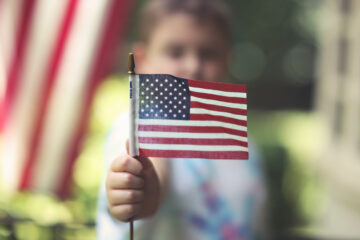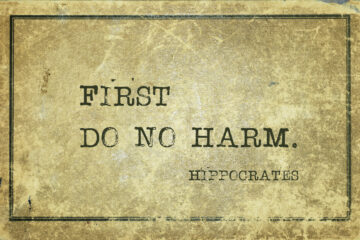Over the years, I have had the great honor of representing several students across the U.S. who were disciplined or suspended over sharing their personal religious views on school grounds. One of my clients, a sixth grade student in Florida was forbidden from handing New Testaments to her classmates. Others cases involved students suspended for passing out religious tracts about the gospel. Still others were disciplined for engaging in “See You At The Pole” celebrations of their faith while assembling around the school flag pole. Some of my student clients, in an Oregon case, were banned from posting Christian Pro-Life materials on a student activities booth.
In the 1960s the Supreme Court handed down two landmark decisions which profoundly impacted modern thought about the place of religion in our public schools. The first was a case called Engel v. Vitale in 1962, and the second was a year later in School District of Abington Township v. Schempp.
In Engel, the Court ruled that it is unconstitutional for state officials to compose an official school prayer and encourage its recitation in public schools. A New York State law required public schools to open each day with the Pledge of Allegiance and a nondenominational prayer in which the students recognized their dependence upon God. Parents of ten students sued because they found the prayer contrary to their religious beliefs and practices.
In Abington, the Court heard two companion cases together involving Bible reading in the public schools. One challenged a Pennsylvania law which required at least ten verses from the Holy Bible be read, without comment, at the opening of each public school on each school day. The second case arose in Maryland, and was filed by the famed atheist Madalyn Murray O’Hara. She challenged Baltimore school system’s practice of reading of a chapter in the Bible and/or the use of the Lord’s Prayer each morning. Once again, it is important to realize that while both laws were ruled unconstitutional, the Court did not ban all Bible reading in public schools; it merely held that students could not be required to read scripture selected by school officials as part of a devotional exercise.
Since the early 1960s, these two cases have launched an avalanche of case law dealing with religion in the public schools, and have produced a great deal of confusion on the part of both school officials as well as Christian parents and students.
As recently as June of 2022, in a case called Kennedy v. Bremerton School District, the Supreme Court took a case involving a high school football coach who “took a knee” during postgame on the football field to pray for his team and was fired. The school district argued that “any visible religious conduct by a teacher or coach should be deemed—without more and as a matter of law—impermissibly coercive on students.” The Court saw otherwise. It held that the coach’s personal religious observance and “speech” was entitled to the same degree of protection under the First Amendment as comparable secular speech.
It is important to understand that the Supreme Court has never held that all religious activity in public school is forbidden; only state-composed, sponsored activity. Here is a list of five ways your child may share his or her faith at school.
- Students may share their personal faith and belief in Christ with their fellow students so long as they do not materially disrupt school activities.
- Students may distribute Christian literature such as tracts, pamphlets or Bible verses.
- Students may form a Bible club in schools which allow for other student clubs.
- Students may include references to their belief in God as a part of their valediction or other speeches to the student body.
- Students are allowed to invite their youth pastor or church leader to school for lunch or a student time of fellowship.
Larry L. Crain, Crain Law Group, PLLC – www.crainlaw.legal














